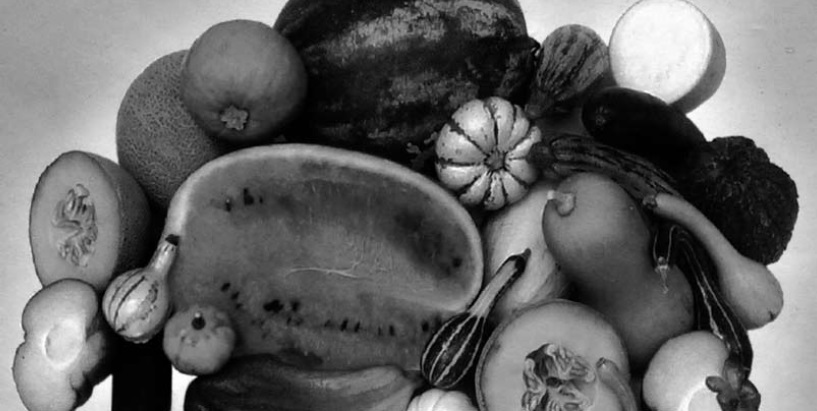Cucurbita pepo var. Scallop seedlings response to phosphoric fertilization

Abstract
Cucurbita pepo var. Scallop is a very vigorous crop from warm climate areas which outstands for the particular shape of its fruits with a festooned edge. Mineral nutrient supply is one of the environmental factors that influence mostly its growth. The aim of this paper was to evaluate the effect of different doses of phosphorus on yield. This trial was carried out in the Experimental Unit of Agronomy Faculty – UNCPBA, in Azul in the Argentinian Wet Pampa. The treatments were: control without fertilization, 100, 200, 300, 400 and 500 kg of ammonium phosphate. The crop started from seedlings with root ball which were transplanted on 15/11, on camlets covered with orange mulching, not irrigated and with a density of 20,000 plants/ha (2 x 0.5 m). The trial covered a total area of 1.488 m2. The trial was designed under a model of completely randomized blocks. General average yield was 48,410 kg·ha-1. The greatest total yield in t·ha-1 was obtained with the application of 300 kg·ha-1 of ammonium phosphate. The number of fruits obtained in treatments 3, 4 and 5 showed similar response, but differed from that of the other doses of 100 and 500 kg·ha-1.
Keywords
Squash, Fertilizer, Mulching, Seedlings
References
- Alvarado, V. P. 1998. Efecto de diversos tipos de acolchados plásticos sobre la temperatura del suelo y su influencia sobre el desarrollo de malezas, precocidad y rendimiento del brócoli. Actas del IX Congreso Latinoamericano de Horticultura. Santiago, Chile. 275 p.
- Cantamuto, M. 1997. Cultivo de melón con mulching en bandas angostas y herbicidas. Actas XX Congreso Argentina de Horticultura. Bahía Blanca, Pcia. de Buenos Aires, Argentina. 114 p.
- Castagnino, A., P. Sastre Vazquez y M. Navarro Dujmovich. 1998. Influenza di diverse tecniche colturali sulla intercettazione della radiazione e sulla resa di Cucurbita pepo var. Vegetable Spaghetti in condizioni di siccità. Actas XVIII Congreso Argentino de Horticultura, Termas de Río Hondo Pcia. de Santiago del Estero, Argentina. 54 p.
- Castagnino, A.M., P. Sastre Vázquez, K. Diaz, C. Boubee y F. Tognoni. 1999. Efecto de la restricción radical sobre el crecimiento y la arquitectura de plantines de pimiento Capsicum annum var. ‘Frutescens’. Horticultura Brasileira 19(1), 1-4.
- Castagnino, A.M., P. Sastre Vázquez, A. Menet y S. Sasale, 2006. Evaluación de técnicas de defensa y de la densidad en el cultivo de una nueva hortaliza: Cucurbita pepo var. Vegetable Spaghetti. Revista Ciencias Agrarias Nº 23. En: http://www.uca.edu.ar/esp/sec-fagrarias/esp/docs-revista/volumenes/tomo.php?numero=23_zapallo_spaguetti.
- Castillo, H. 1998. Modificaciones estacionales de la temperatura del suelo por el uso de acolchados. Actas del IX Congreso Latinoamericano de Horticultura. Santiago, Chile. 229 p.
- Darwich, N.A. 1994. Fósforo, un nutriente esencial para las plantas. Manual de fertilidad de suelos. INTA, Balcarce. 65 p.
- Darwich, N.A. 1983. Niveles de fósforo asimilable en los suelos pampeanos. Idia 409/412, 1-5.
- Darwich, N.A. 1984. Implantación y manejo del cultivo. En: Tecnología disponible para el cultivo de maíz en la zona Sudeste de la Pcia. de Buenos Aires. EEA Balcarce INTA 1, 9-17.
- Darwich, N.A. 1989. Manual de fertilizada de suelos. SAGyP INTA ENICHEM Agricultura. Capítulos 4 y 5.
- Emmert, E. 1957. Black polyethylene for mulching vegetables. Proc. Amer. Soc. Hort. Sci. 69, 464-469.
- Giustiniani, L., A. Graifenberg, L. Botrini y M. Curadi 2001. Salinitá e impianto nel allevamento dello zucchino. Rev. Colture Protette 30(3), 73-76.
- Loy, B. y O. Wells. 1990. Effect of IRT mulches on soil temperature, early vegetative development in muskmel- on and weed growth. Proc. Natl. Agricultural Plastics Congress 22, 19-27.
- Martínez, R.S. 1997. Efecto de tres sistemas de manejo sobre la producción de zapallo tipo Butternut en lotes enmalezados. Actas XX Congreso Argentina de Horticultura. Bahía Blanca, Pcia. de Buenos Aires. Argentina. 114 p.
- Mullins, C., R. Allen Straw y A. Rutledge. 1992. Tomato production with fertigation and plastic mulch. Tenn. Farm Home Sci. pp. 23-27.
- Paris, H. y H. Nerson 1986. Genes for intense fruit pig- mentation of squash. American Genetics Association 77, 403-409.
- Paris, H. 1988. Complementary genes for Orange Fruit Flesh Color in Cucurbita pepo. HortScience 23(3), 601-603.
- Paris,H.1992.Arecessive,hypostaticgeneforplainlightfruit coloration in Cucurbita pepo. Euphytica 60(1), 15-20.
- Quattrucci, M. 2001. Concimazione e qualità del cocotero. Revista Informatore Agrario 18, 75-79.
- Trentini, L. 1996. Volume dell’alveolo e qualitá della piantina in vivaio. Italia. Vivaismo Orticolo, Suplemento L’ Informatore Agrario 29(96), 47-62.